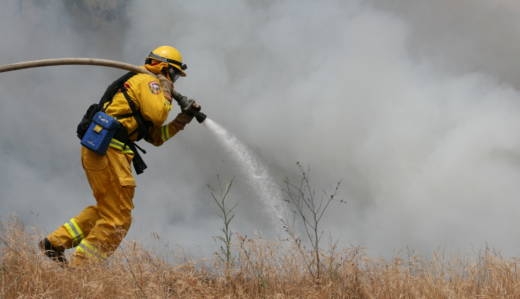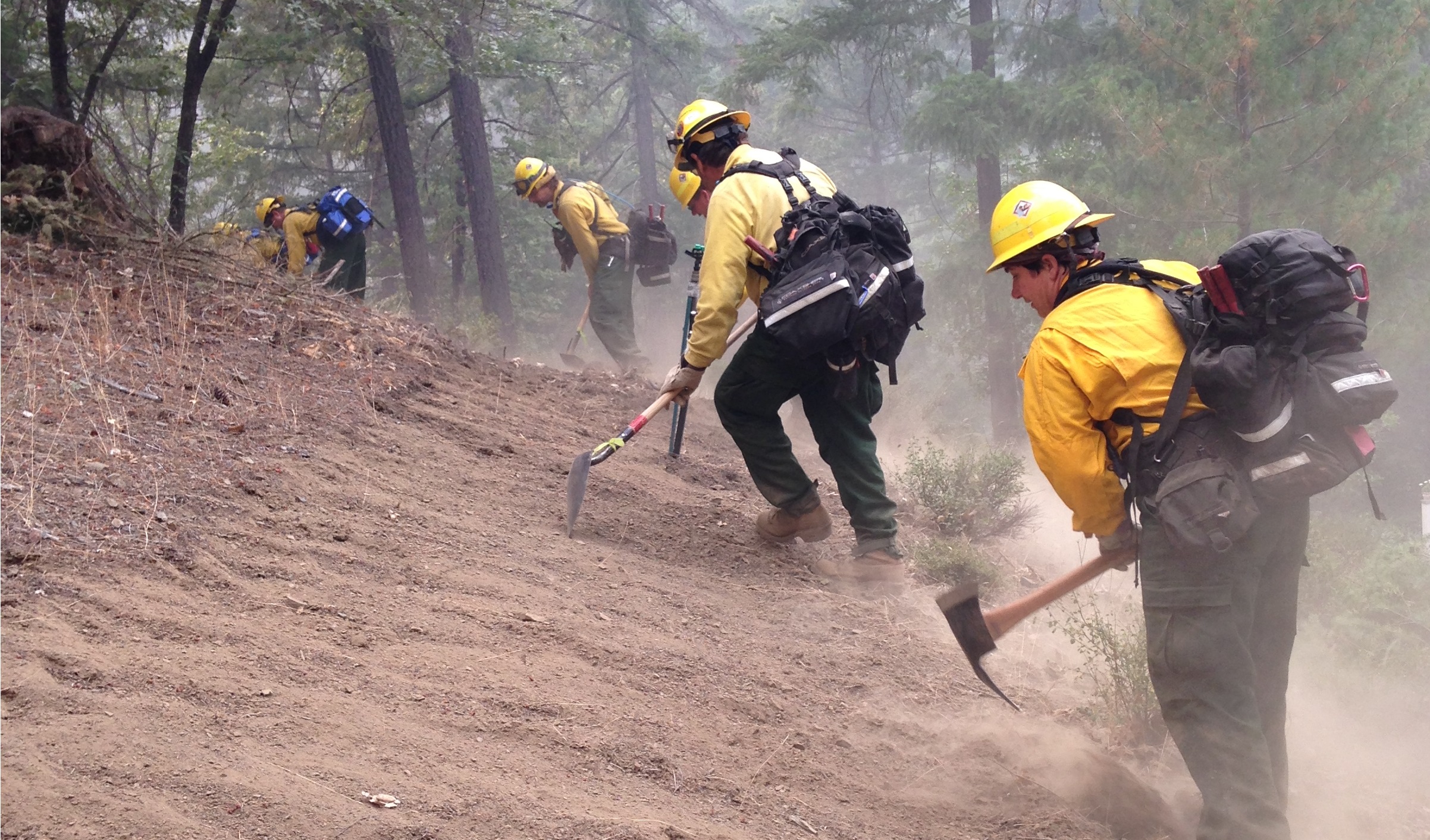Once a fire spews forth the goal is suppression, and the first step is containment. But what does containment mean and why is it so hard to achieve?
“Containment means that there’s some type of barrier between the area that has been burned, which we call ‘the black’ and an area that has not been burned which we refer to as ‘the green,'” says Cal Fire public information officer Jaime Williams.
There are two types of barriers—natural and artificial. A stream or lake can act as a natural barrier. An artificial barrier is often a dirt path dug around the fire. Firefighters will use a bulldozer to create what is called a “dozer line,” or manually carve out a path using picks and shovels, which is called a “hand line.”
“They basically scrape the top layer of the grass off to leave bare mineral soil,” says Williams. “That way the fire stops because there’s nothing to burn.”
Or firefighters will employ a “hose lay,” where they’ll carry a synthetic hose around the fire, periodically spraying the area inside “the black.”


